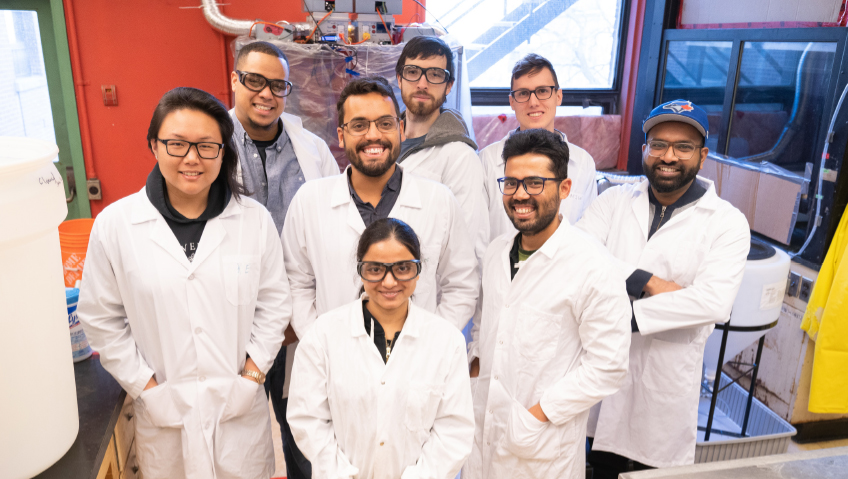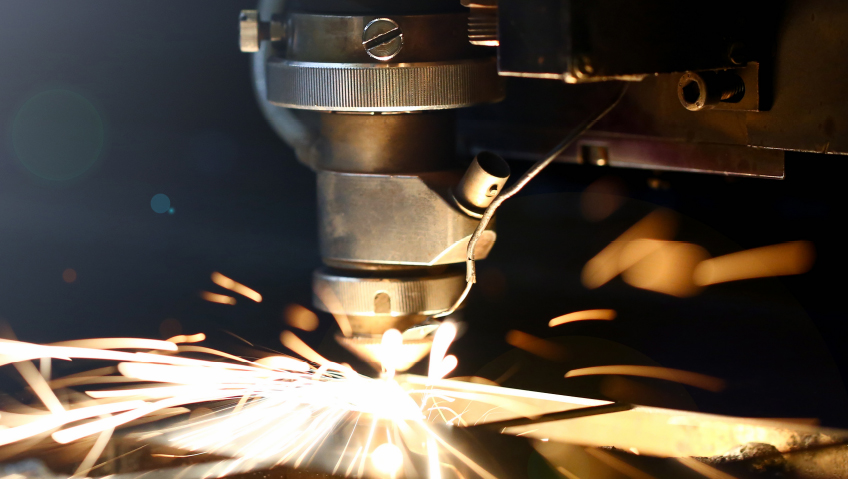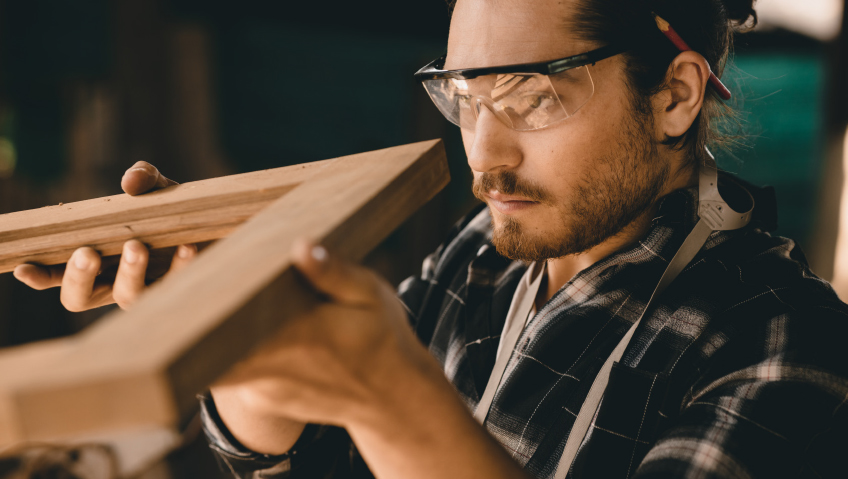The potential of plastic production at Genecis Bioindustries Inc. is astounding. The company is creating high-value plastics from food waste that compete in function with oil-based plastics, but are environmentally friendly, composted within a month, and degraded in a year. Genecis is building a circular economy by helping businesses use green PHA plastics in agriculture, packaging, and food services, and reducing the amount of plastic – approximately 18 billion pounds of it – that ends up in oceans every year.
With many countries and governments looking to ban single-use plastics and plastic bags in the coming years, PHA plastic is an excellent and sustainable business alternative to oil-based plastic products with their 1000-year breakdown process.
Since Genecis was founded by Luna Yu in 2017, this innovative company has been making rapid progress in an industry that’s already moving quickly to provide consumers with bio-based materials made from renewable resources instead of petroleum hydrocarbons.
A way to stop the waste
“Luna knew she wanted to do something that addressed the issue of food waste, plastic waste and emissions pollution,” says Marcos Igreja, Associate Director of Engineering and Operations. “Before starting Genecis, she worked with a couple of different groups that were trying out other solutions, and eventually she came up with this idea and application with a lot of potential.”
Igreja, who has been with the company the longest after Yu, says Yu put in a lot of work to raise money, attending more than 100 different start-up competitions with small prizes of $1,000 to $2,000, until she earned enough to hire a team of two people: Igreja and the current director of R&D.
“We started working out of University of Toronto, sharing a single bench,” he says. “We were using rice cookers to grow our bacteria. We didn’t have any fancy equipment at all, and we just went at it. We started trying to isolate the bacteria we were interested in, and then things took off pretty quickly afterwards.”
“Took off” meant a larger lab space and team expansion, followed by a 4,000-square-foot facility in Scarborough where the company is now located. It also meant funding: Both Sustainable Development Technology Canada and NGen Canada now fund Genecis and help scale up technology and leverage investment dollars.
“Today we’re at a point where we’ve been able to demonstrate the full process of the technology start to finish,” says Igreja. “We’re working on the pilot scale, we’re able to study each different area of the technology and have enough capacity to work with a number of different clients.”
This vision is what drove Yu to start the business, and what propelled Igreja to join her in her quest to take food waste from the landfill – where it generates methane and greenhouse gas emissions – and transform it into a plastic product that degrades 100 percent in nature.
Always innovating
While bioplastics have been around for a couple of decades, Genecis is one of the first companies to create them from a waste product.
“PHAs isn’t just one product, it’s actually a whole range of different kinds of polymers you can produce from blending different elements,” says Patrick Neill, senior director of engineering. “Companies have started to make smaller amounts of PHA primarily using sugars derived from sugarcane or molasses, but they’re limited in the kind of product they can produce.”
Using a broad range of food waste as a feedstock gives Genecis the building blocks to control the flexibility of the plastic through the process, which can’t be done easily using feedstock solely from sugarcane, sugar beet, or some other single type of carbon source, says Neill.
“That’s the beauty and most innovative aspect of the technology,” he says. “We have food waste from a variety of carbon sources that enables us to derive a bunch of different carbon inputs to our bacteria so we can choose the plastic we produce.”
Just as humans store energy as fat, plants store energy as glycogen, and it’s this kind of bacteria that stores that energy as PHA.
“We create this reactor where bacteria are encouraged to rapidly divide,” says Neill. “Once we’ve got these little skinny cells which are very hungry, we transfer them to another reactor where they’re fed with a lot of food and they consume it very quickly and it gets stored as PHA. We can then harvest those cells and extract the PHA and purify it.”
A view of the future
Does this process offer hope for a future where PHA plastic replaces oil-based products in an eco-friendly and environmentally responsible manner?
“We definitely view it as the future,” says Neill. “I don’t think we’ll displace 100 percent of oil-based plastics, but definitely the avenue is there to displace initially all of the premium food packaging and consumer type, one-time-use products.”
While there are “many billions of dollars” worth of plastic to tackle in those markets, Neill thinks Genecis can make major inroads into disrupting plastics that pollute the environment. Initially, Genecis won’t be able to compete head-to-head on prices of oil-based plastics, but if you put a price on carbon, that changes the story.
“The good thing about PHA is it has properties that can compete with petroleum plastic,” says Igreja. “Even though the cost isn’t there yet, it’s one of the few bio-based plastics that have a lot of very similar properties to typical petroleum-based plastics. It can be used for a lot of similar applications.”
The weakness of some existing bioplastics is they don’t do a good job matching the performance of oil-based plastics, plus they don’t compost or break down easily, says Neill, which probably explains why the public has a negative opinion of bioplastics, based on initial experience.
“PHAs really offer the potential to meet those end-user product needs while also being completely biodegradable in the environment without having any special composting processes,” he says. “They can just go in the backyard compost and break down in a matter of months.”
The early success of Genecis is due, in part, to its ability to produce product quickly, coupled with the tremendous success they’ve had lately engaging with and understanding the needs of end customers, says Neill.
The company now has joint agreements in place with several “big name” businesses, enabling Genecis to truly understand the marketplace and the processes and technology required to meet those needs.
Genecis has also been working closely with existing plants that process food waste, adds Neill. “We’ve got a lot of good connections and relationships with securing the feedstock for the process, which is somewhat critical. Without the feedstock you don’t have a product.”
Introducing negative-cost feedstock
In just four years the company has generated much customer interest, mostly due to people recognizing the potential of producing PHA from negative-cost feedstock.
“This PHA industry is going to explode,” says Igreja. “We’ve really been able to get a very strong foothold in terms of our potential clients and development agreements.”
While the company can’t fully disclose particular products or specific companies, they are initially going after high-value products where the price per kilogram of bioplastics is going to be substantial: an expected occurrence.
“When you first do a commercial plant, you know your costs are going to be higher,” says Neill, adding that Tesla is a good model. “Tesla got into electric cars by making a very premium high-end value product. As they ran their manufacturing processes they were able to lower that cost as they developed their batteries.
“We view our business model much the same way. We have to target a very high-value market – albeit a small niche market – where we can create good revenue early on.”
And clients are very interested.
“Big name companies are desperate for PHAs,” says Neill. “A lot of them have developed internal mandates to get to net zero carbon emissions within a decade or so, and really need to work with companies like ours to find a way of closing the loop on their waste and end products.”
That ability to take one company’s waste and convert it into a product they then sell is circular-economy thinking that truly opens the path to production and potential clients.
“Imagine working with a large company on a packaging application, and they’re also a food waste user,” explains Igreja. “We’re able to take the food waste that comes out of their industry and turn it into something they can use in their own supply chain to make plastic products to package their food. That’s really how we think of everything as working circularly: the same company’s waste becomes part of their supply chain for their plastic products.”
Vast potential
Along with the food industry, Genecis is also delving into the pharmaceutical industry, and potentially medical applications, hinting at the wide range and vast potential PHA has as a plastic in completely different areas.
Now that it has secured substantial commercial interest, Genecis is looking to scale up its technology quickly, along with ramping up production capabilities.
“That’s a key focus for us over the years ahead, scaling technology to satisfy purchase orders we have from customers,” says Neill. “We already have millions of dollars’ worth of purchase orders from customers, but we don’t have the manufacturing capacity.”
That race to ramp up can also create its own set of challenges, however.
“We’re making good progress, but it’s not the kind of technology where you can just do a 100-times scale-up,” says Neill. “You have to do it in steps. You need to do 10 times capacity, or 20 times capacity see how it goes first. You can’t just go from zero to 100.”
Genecis anticipates producing product by the middle to the end of next year, followed by operating at a pre-commercial scale, and then a couple of years thereafter being at full commercial scale. It’s a huge step up from rice cookers.
“The ability to work like that is something that’s made us very competitive so far,” says Neill, adding that the technology of working with cost-negative feedstock, the bacteria they’ve developed, and control of the fermentation side of the process set Genecis apart.
Another differentiator is the amount of traction with end customers, getting purchase orders signed and joint order agreements with major Fortune 100 and 500 companies, he adds.
Both Neill and Igreja agree, however, that the company’s ability to move quickly has given it a major advantage in what is sure to be a hugely competitive market.
“Genecis has only been around for five years now, but we’ve been able to even the playing field with a lot of people who have been in the field for a while, and that’s the result of us building a team of very talented people,” says Igreja. “Our team is extremely diverse. We’ve got people from all over the world with all sorts of different backgrounds bringing in extremely good expertise. We’re all very passionate about what we do.”






